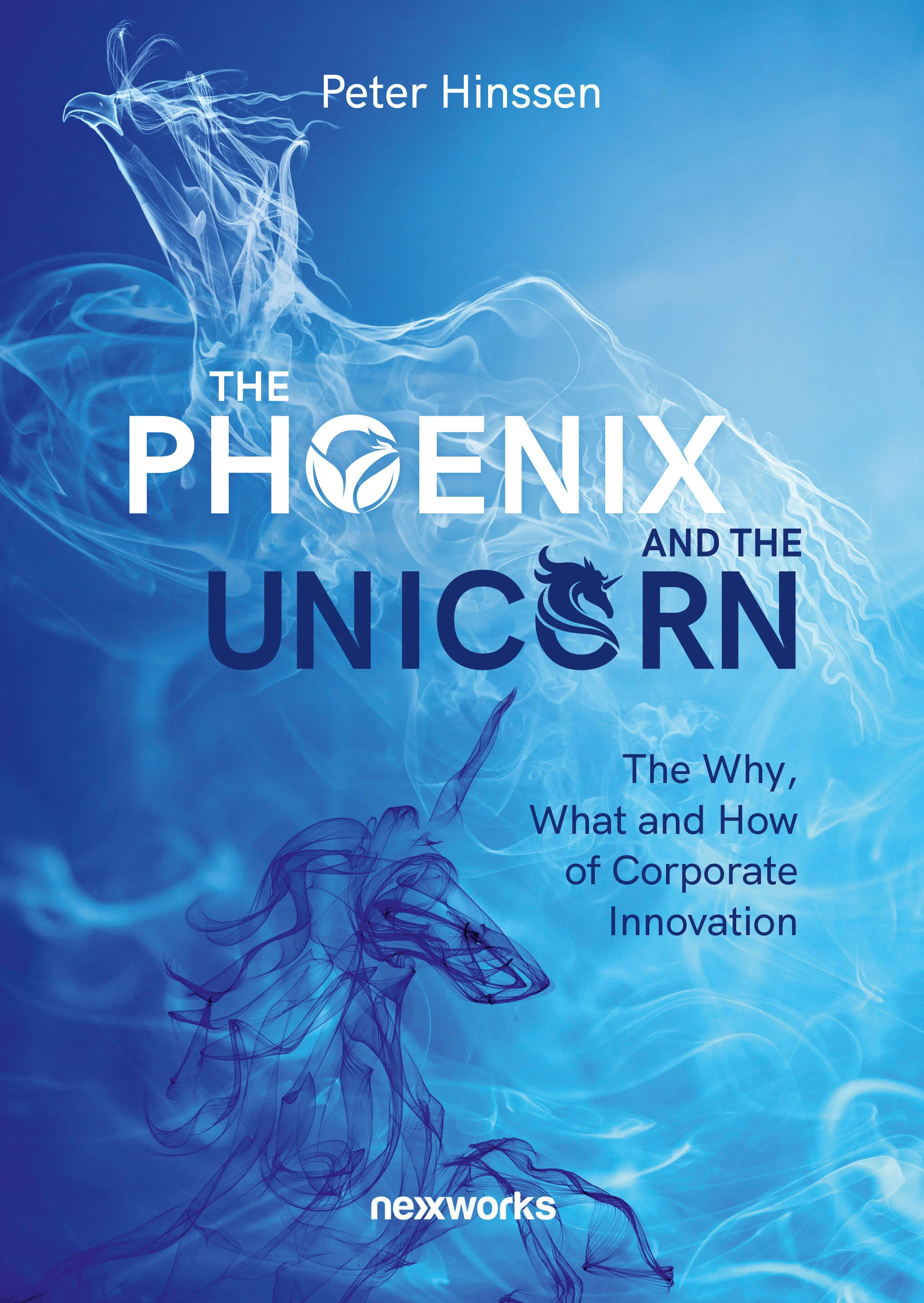The Phoenix & The Unicorn: The Why, What and How of Corporate Innovation by Peter Hinssen
/Peter Hinssen is one of the world's leading experts on radical innovation, leadership and the impact of digital on society and business. He is also great company, as I found when I had the pleasure to be sat on a bus with him a few years ago. Hinssen was acting as our ‘tour guide’ for a group of senior executives visiting a group of fast-growing start-ups in Silicon Valley. On the microphone, Peter regaled the group with stories of the billionaires hidden in the mansions of Atherton, of the deals brokered at Buck’s Diner in Woodside, of the logo-less Amazon buses plowing down the 101 and the suburban garage in Palo Alto, where Hewlett and Packard started out. Peter is a proud Belgian and European, but he is completely in his element amongst the disruptive start-ups of Silicon Valley, or, his other well-trodden route, amidst the limitless innovation found in Guangzhou and Shenzhen.
The surprise then here, in his new book, is that his focus is less the disruptive entrepreneur, trying to make some new dent in the universe and instead some of the biggest most established companies in the world, wrestling with change and transformation. He even humbly admits that this is not his comfort zone and he apologises upfront for being so pragmatic, including practical exercises built into each chapter called “Your Turn”.
Ten years ago Hinssen wrote The New Normal, about what happens in a world where digital stops being special and just becomes the norm. In 2017, he wrote The Day After Tomorrow, which was a clarion call to executives to focus on technology, innovation and the forces that would shape the future, rather than be mired in the backward-looking burden of the typical management agenda.
In his new book, he starts out by encouraging leaders to embrace the “never normal,” an environment where things are constantly changing and triggered by what he calls “seismic shocks”. The book continues with a number of neat models, which avoid becoming weary graphics straining to make a point, but are instead memorable and relatable. He revisits the ‘Day After Tomorrow’ concept, but applies it with a particular area of required focus; what he calls the ‘The Hour Glass’ model. Here the leader’s focus should be on the top of the glass, with a wide-lens on opportunities, prioritising, selecting, experimenting and testing, but then, crucially, making sure the capabilities and resources are made available to scale and run with new ideas.
The central section covers four different types of Innovation; Product, Market, Service and Model. Nothing new there you may think, but he then explores the reality of these innovation types; providing vivid illustrations and examples, from the hi-tech world with like SpaceX and Starlink, finance innovators like ANT Financial and Revolut and household names like Amazon and Lufthansa. He even takes a hilarious diversion into a story about Colgate and its bizarre foray into “Kitchen Entrees”. He then maps the four categories to the huge enterprise that is Disney, showing how their approach and reach [notable for a one hundred- year old business] has been revitalised enormously by innovation across these four dimensions.
Hinssen is clear and generous in the second half of the book, building out his Phoenix manifesto with some models adopted from colleagues at London Business School [where he has been a guest Lecturer for a decade], elegantly citing the late Sumantra Goshal’s talk to the World Economic Forum about “Calcutta in the summer and Fontainebleau in the spring”. He also adopts Costas Markides’ succinct model of successful change leadership, retrospectively applying these principles to his ‘exemplar Phoenix’ - Walmart, an organisation whom he has advised for a number of years. The formula is straightforward enough; building urgency, having a clarity of vision, shared mindset, shared direction and proper execution support, but he adds the essential and rare ingredient, which is not a strategic requirement, but a leadership one; to do these things means you need to be “fearless”.
By now, he has stopped apologising for being “pragmatic” and leaves us with “10 Questions to Spark your Inner Phoenix”. The compelling case made, in this terrifically readable and entertaining book, is that your organisation will not be able to avoid any of these tough questions, if you are ever to hope to rise from the inevitable ashes.
John Dore


